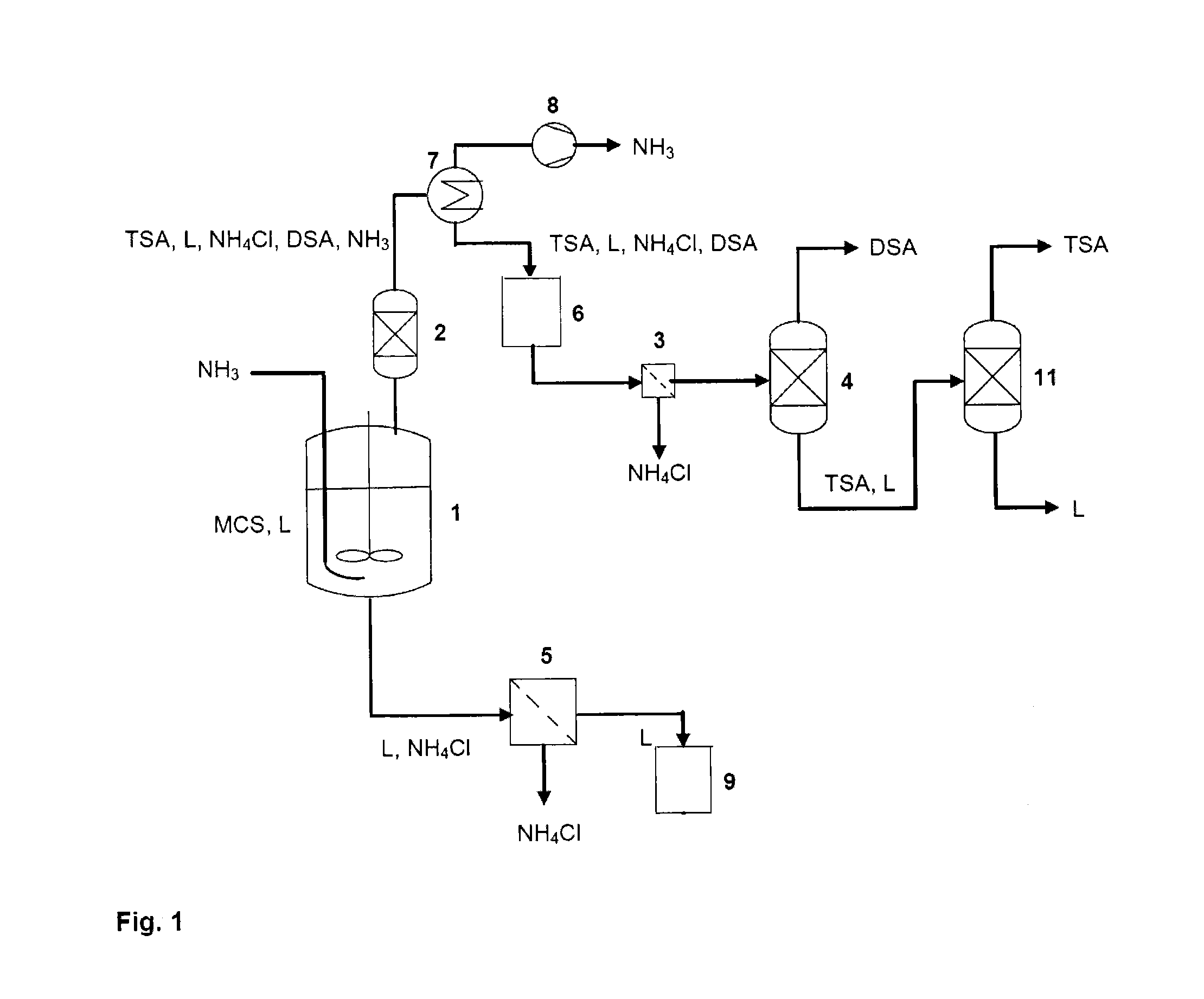Process for producing pure trisilylamine
a trisilylamine and process technology, applied in the direction of chemical apparatus and processes, organic chemistry, silicon compounds, etc., can solve the problems of low tsa yield, formation of “unwanted” by-products, and falling yield of tsa
- Summary
- Abstract
- Description
- Claims
- Application Information
AI Technical Summary
Benefits of technology
Problems solved by technology
Method used
Image
Examples
example 1
[0170]3400 ml of toluene and then 466 g of monochlorosilane were charged into a 5 l stirred autoclave purged in advance with inert gas and having cooling and heating modes and an attached distillation unit, comprising distillation column and condenser. 177 g of ammonia were added to the reaction solution in the course of a period of 7 hours 5 minutes. The temperature was a constant +10° C. during the addition. The pressure increased during the addition from 2.8 bar a to 3.1 bar a.
[0171]After the addition of ammonia, the mixture was stirred for a further 1 hour at +10° C. Then, the reactor solution was adjusted to and held at −20° C. under continued further stirring overnight.
[0172]On the following day, a pressure of 0.5 bar a was set via a vacuum pump attached downstream of the distillation unit and the stirred autoclave was heated. By means of the distillation unit, TSA, DSA, fractions of toluene and traces of ammonium chloride were distilled off. Excess ammonia from the synthesis ...
PUM
| Property | Measurement | Unit |
|---|---|---|
| temperature | aaaaa | aaaaa |
| pressure | aaaaa | aaaaa |
| temperature | aaaaa | aaaaa |
Abstract
Description
Claims
Application Information
 Login to View More
Login to View More - R&D
- Intellectual Property
- Life Sciences
- Materials
- Tech Scout
- Unparalleled Data Quality
- Higher Quality Content
- 60% Fewer Hallucinations
Browse by: Latest US Patents, China's latest patents, Technical Efficacy Thesaurus, Application Domain, Technology Topic, Popular Technical Reports.
© 2025 PatSnap. All rights reserved.Legal|Privacy policy|Modern Slavery Act Transparency Statement|Sitemap|About US| Contact US: help@patsnap.com



